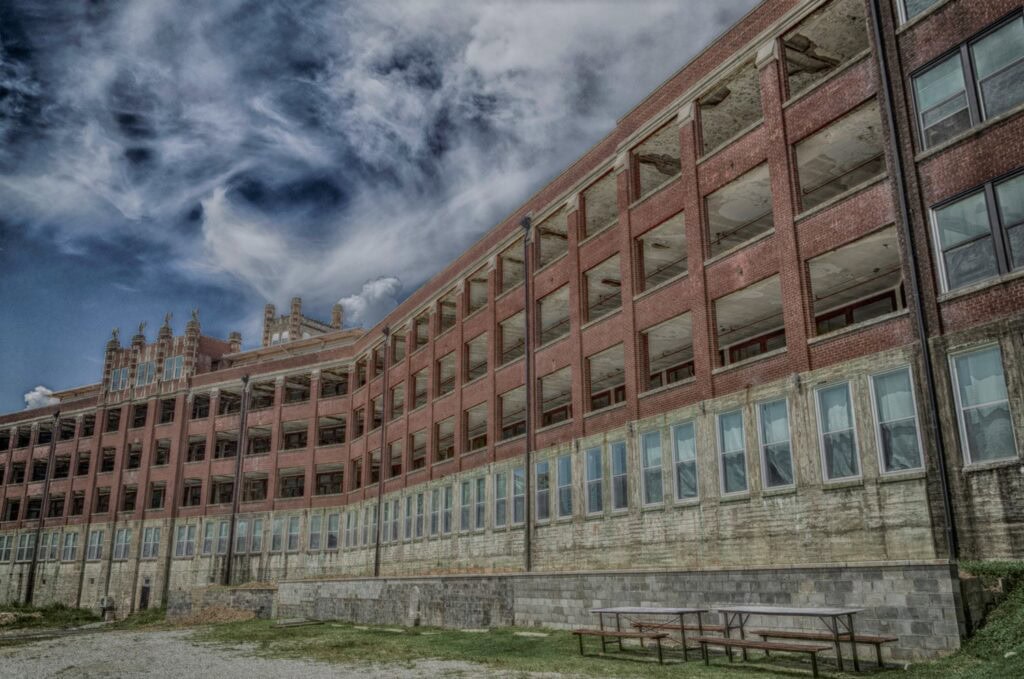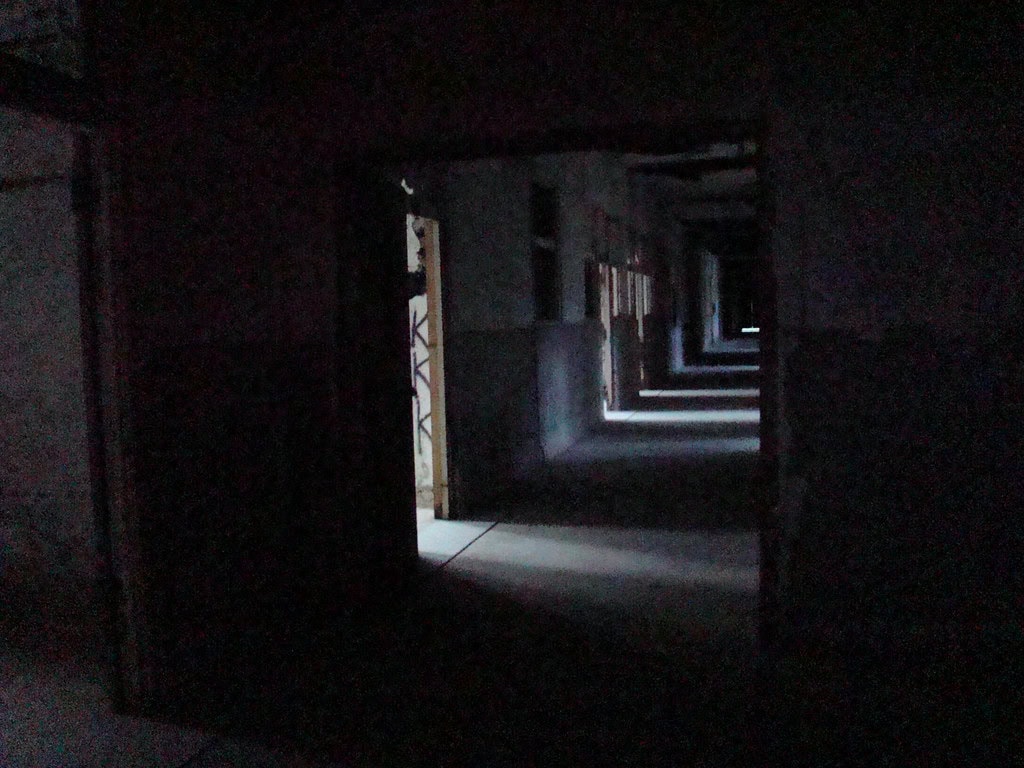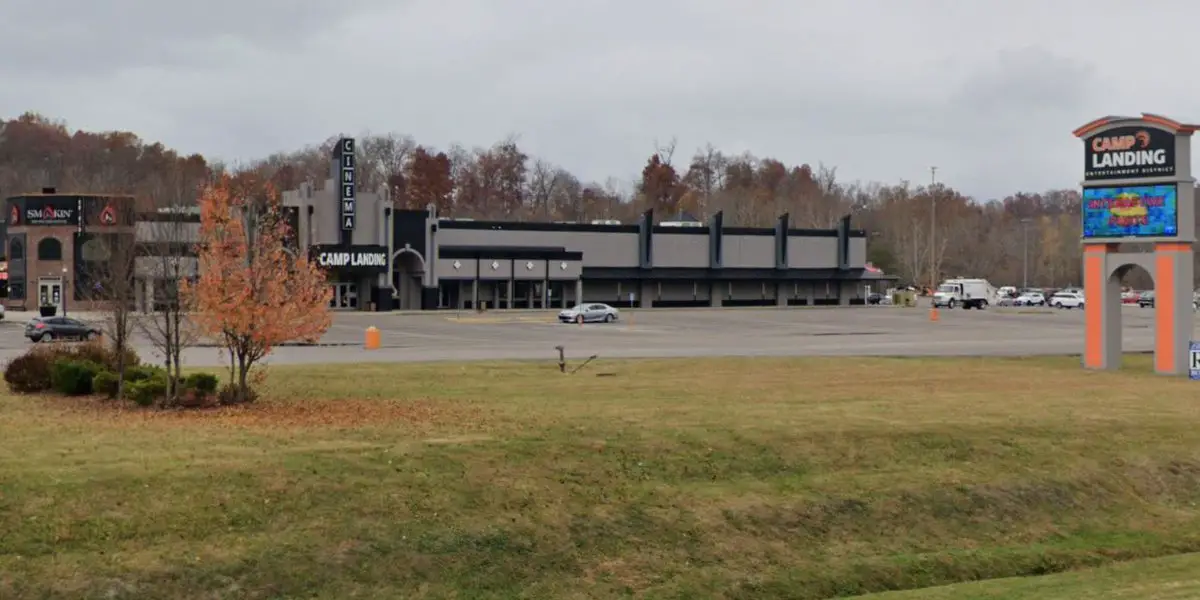A Hospital on the Hill
The wind cuts through the trees, rattling the broken glass in the windows. What’s left of the old Waverly Hills Sanatorium stands against the gray sky, five stories of crumbling brick and empty halls.
Inside, paint peels in long strips from the walls. The tiled floors are cracked. A rusted bed frame sits in the corner of a room that once held a patient hoping for a cure that never came.
Before the ghosts, before the legends, it was a hospital—a last chance for thousands of tuberculosis patients.
In the early 1900s, the disease spread fast in Louisville, feeding off the city’s swampy air and crowded streets.
Doctors had no real treatment, only rest and fresh air. They needed a place to put the sick—somewhere high above the city, where the wind could sweep the infection away.
The land had a name before the hospital took it. Major Thomas H. Hays bought the property in 1883 and built a schoolhouse for his children.
The teacher, Lizzie Lee Harris, loved Sir Walter Scott’s Waverley novels and named the school after them.
The sanatorium kept the name, though at some point, the extra “e” disappeared.
The first hospital opened in 1910, a modest two-story wood building. It had space for 50 patients—enough, they thought, to handle the worst cases.
But tuberculosis didn’t slow down. By 1911, the city knew it needed more.
Patients from Louisville City Hospital were moved into tents while a new building was planned.
In 1914, a children’s ward opened, housing both sick kids and the sons and daughters of patients too weak to care for them.
Waverly Hills Sanatorium was growing, but so was the disease.
The hospital was never meant to be a prison, but for many, it was. Once admitted, patients rarely left. Some arrived in the early stages with a chance to recover.
Others came, knowing they wouldn’t walk out again. At its peak, Waverly Hills Sanatorium operated as a small city—self-sufficient and isolated.
By the time construction started on the five-story brick facility in 1924, tuberculosis had taken over Jefferson County.
There weren’t enough beds, and patients were turned away at the gates.
This wasn’t the kind of place where people came to get better. It was a place where they came to wait.
A City of the Sick
The wind carried voices up from the valley below.
At night, the lights of Louisville flickered in the distance, but here on the hill, the world was quiet—just the shuffle of nurses’ feet, the steady ticking of a clock, the low murmur of patients whispering in the dark.
By the mid-1920s, Waverly Hills Sanatorium had become more than a hospital. It was a sealed-off world, a city of the sick.
The original wooden structures had decayed, and tuberculosis cases were outpacing the number of beds.
In 1924, construction began on something larger—a five-story, fireproof brick building with space for more than 400 patients.
It opened on October 17, 1926, standing tall against the Kentucky skyline, a fortress designed to keep disease in and the rest of the world out.
Life inside followed a strict rhythm. Patients spent long hours on open-air porches, wrapped in thick blankets, breathing the cold wind as if it could scrub the infection from their lungs.
Meals arrived at the same time every day, and visitors were rare. Those who walked through the front doors had one thing in common: they were all waiting for a cure.
Doctors tried everything. Sunlight therapy, pneumothorax procedures that collapsed infected lungs, and surgical removal of ribs to give the lungs more space.
The treatments were brutal, but tuberculosis didn’t leave quietly. Some patients survived and walked out. Others left another way—through the tunnel.
The body chute started at the hospital and stretched 500 feet down the hill.
The official explanation is that it was built to transport supplies from the lower road to the main building, but in reality, it served another purpose.
When a patient died, hospital staff wrapped the body, placed it on a stretcher, and rolled it down the tunnel away from the other patients.
No one wanted the living to see how many left through the back door.
For years, Waverly Hills Sanatorium operated at full capacity, but the disease was stubborn.
No matter how many treatments doctors tried, the death toll never slowed. Louisville needed this hospital, but it needed a cure more.

Medicine Moves On, and Waverly Fades
The first real breakthrough came in 1943. Streptomycin, an antibiotic discovered by a team of researchers at Rutgers University, changed the game.
It didn’t just slow tuberculosis—it stopped it. By the early 1950s, cases plummeted across the country. People who would have spent years on Waverly’s porches now took a few pills and went home.
By 1961, there was no longer a need for a hospital this size.
The remaining patients were transferred to Hazelwood Sanatorium, another tuberculosis hospital in Louisville. On a quiet summer day in June, Waverly Hills Sanatorium closed.
After fifty years, the city of the sick had emptied out.
The doors didn’t stay locked for long. A year later, in 1962, the building reopened as Woodhaven Geriatric Center, a nursing home for elderly patients and people with severe mental illnesses.
It was a different kind of facility but not a better one. Reports surfaced of neglect, overcrowding, and unsanitary conditions. By 1982, the state had seen enough and shut Woodhaven down.
For the first time in nearly a century, Waverly Hills Sanatorium stood empty. The wind still whistled through the broken windows, but now, no one was inside to hear it.
The Ghosts and the Myths
The first trespassers came when the doors shut for good: teenagers looking for a place to drink, explorers drawn to the emptiness, and people whispering about what had happened inside.
They left with stories—figures standing in doorways, footsteps in the halls, doors slamming without warning.
The building was falling apart, but the rumors kept it alive.
Waverly Hills Sanatorium had always been a place of death. By some estimates, thousands had taken their last breaths in its rooms, though the exact number was never recorded.
After it closed, those numbers grew into something else—tales of restless spirits and shadowy figures.
The abandoned hospital became more famous in death than it ever had been in life.
Developers tried to repurpose the land. In 1983, J. Clifford Todd, a real estate investor from Simpsonville, bought the property for $3 million.
He had a plan: turn it into a minimum-security prison for the state. The neighbors fought back. They didn’t want inmates housed on the hill above their homes.
Todd abandoned the idea and floated a new one—high-end apartments, a space for people to live. That didn’t happen either.
In 1996, a different vision took shape. Robert Alberhasky, head of Christ the Redeemer Foundation Inc., wanted to build a massive statue of Jesus modeled after the one in Rio de Janeiro.
The figure would stretch 150 feet into the sky, with outstretched arms welcoming visitors.
The sanatorium itself would become a chapel, a theater, and a gift shop. Fundraising efforts stalled almost immediately.
The project needed $4 million to start, but in a year, it had raised only $3,000. Alberhasky walked away.
By the late 1990s, Waverly Hills Sanatorium had settled into its new role—a place of legend.
Paranormal investigators arrived with cameras and recording devices, hoping to capture proof of what people claimed to hear and see.
Stories spread of a nurse who had died in Room 502, a little boy rolling a ball down the halls, and figures moving through the darkness.
The ghosts, whether real or imagined, had taken over.

Waverly Hills Sanatorium’s New Owners
In 2001, the sanatorium found new owners. Charlie and Tina Mattingly bought the building not to turn it into a prison, an apartment complex, or a religious monument but to restore what was left.
They had a plan—and this one worked. They opened the doors, but not as a hospital. Instead, Waverly Hills Sanatorium became a destination.
Visitors could walk its halls on guided tours, hearing about the patients who had lived there and the spirits that might still remain.
Paranormal groups booked overnight investigations, bringing infrared cameras and EVP recorders.
Every fall, the building transformed into a haunted attraction, drawing in crowds who wanted to be scared by something real or staged—either worked.
The Mattinglys put the money back into the building. Restoration work started with the windows, the first real repairs in decades. The goal was to preserve Waverly Hills Sanatorium, not erase what it had been.
But keeping the sanatorium standing hasn’t been easy. Legal disputes, funding challenges, and maintenance issues have kept the future uncertain.
Even so, it remains one of the most well-known haunted locations in the country, a mix of history and myth, fact and fiction.
A place where people came to heal—and where some say they never left.
Waverly Hills Sanatorium Today – The Business of Fear
The halls of Waverly Hills Sanatorium came alive again in September 2024, but not with doctors, nurses, or patients.
The old tuberculosis hospital, turned haunted attraction, reopened its doors for another Halloween season, drawing thousands to experience its eerie corridors.
Louisville’s most infamous building had once been a place of suffering—now, it is a business built on fear.
On September 27, the latest haunted house attraction kicked off, bigger and more elaborate than ever.
Organizers expanded the event, designing new sets and introducing fresh scare tactics to keep visitors on edge.
Fog clung to the floors, rolling past broken tiles and rusted gurneys. The smell of damp concrete mixed with something older, something that had been left behind.
Actors crouched in doorways, waiting. Footsteps echoed in the halls. A sudden shriek cut through the air—part of the performance, but in this place, it was hard to tell the difference.
The haunted house at Waverly Hills Sanatorium had returned, bigger than before. The hospital, once full of real patients, now held paying visitors.
They shuffled through dim corridors, hearts pounding, paying for the privilege of being scared.
But the business of fear went deeper than jump scares. The ticket sales, the merchandise, and even the ghost tours all kept the lights on, the roof from caving in, and the windows from shattering completely.
When the last screams faded and the actors packed up, the real business remained.

Paranormal tours ran year-round. Tour guides told the same stories over and over, their voices hushed, the flashlight beams flickering across peeling paint.
“Timmy” was always a favorite. People swore they saw him, a shadow darting past doorways. Some brought balls, rolling them across the floor, waiting for an invisible hand to send them back.
Some waited for nothing at all—just silence, settling over the sanatorium like dust.
Visitors left toys in the empty rooms, hoping for a response—sometimes, they swore the ball moved on its own.
By 2025, Waverly Hills Sanatorium had cemented its status as a landmark of Louisville’s history, a place that blurred the lines between past and present.
Once a house of healing, then a place of abandonment, and now a tourist attraction, it continues to evolve.
Whether people come for the history or the hauntings, one thing is certain—Waverly Hills Sanatorium is still very much alive.










I’ve been here twice once for a haunted attraction around Halloween and once for a guided tour, yes we did exprience something on the tour in the small room connection to the morgue with the rollers that the bodies would lay on,the guide pushed them both in and there was only one way out of the room and we were the last 2 out and as we were leaving the bottom roller came back out on its own and noone else was in there that could be seen anyway…..very spooky….Also I had a relative that passed away there of T.B.
That’s eerie—imagining one rolling out by itself gives me chills. It’s like Waverly Hills isn’t ready to rest yet.
My grandfather was one of the patients who lived to tell the story of the sanitarium. He was there when I was 4-5. Years old and I’d make him a cake on Saturday for my dad to take to him on Sunday.
It’s amazing how something as simple as baking a cake can create such a lasting memory. I’m sure your grandfather cherished those Sundays as much as you did.